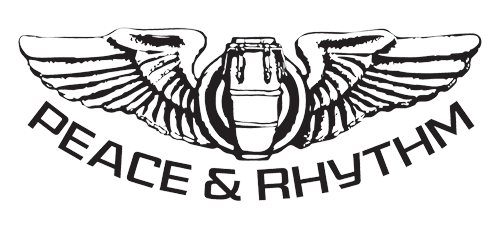News & Updates
Please note: this page is here for archival purposes only and is no longer being updated.
[
{
"id": "noah-howard-april-6-1943-sept-3-2010",
"data": {
"title": "Noah Howard / April 6, 1943 - Sept 3, 2010",
"slug": "noah-howard-april-6-1943-sept-3-2010",
"date": "2017-04-06T00:00:00.000Z"
},
"body": "**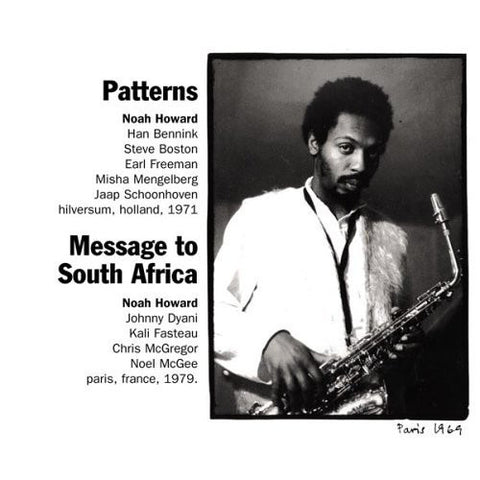**\n\n**Noah Howard** was underknown as a sax player to many, yet was a vital figure in the landscape of out-jazz, recording albums for ESP-Disk, America, Freedom, CIMP, Free Music Productions, Ayler Recordings and his own AltSax imprint, among others.\n\nBorn in New Orleans, he was deeply inspired by John Coltrane and Albert Ayler and cut a couple of disks on the legendary underground NYC label ESP in the mid-'60s. In '68 he left the States, living most of the rest of his life in Europe (as well as some time in Kenya).\n\nHe played on Archie Shepp's amazing _Black Gypsy_ album in '69 and _Pitchin' Can_ in '70. He was a member of Frank Wright's Center Of The World group in the late '60s/early '70s before playing jazz-funk, reggae and world music from the mid-'70s-early '90s, while also running a studio and nightclub. He returned to the improviser's world as interest in his old records was picking up.\n\nI would like to point the readers to the incredible Eremite CD issue of two seminal Howard albums, _Patterns_ ('71) and _Message To South Africa_ , which featured anti-apartheid positioning and employed the great Johnny Dyani and Chris McGregor, two artists who were exiled from South Africa. \"Message\" included a perversion of the South African national anthem and never saw a release when it was recorded in '79 for Mercury, withheld due to \"militancy\". This disk included both of these albums and is highly recommended, blazing free jazz protest that is international in scope. Unfortunately, I was unable to find the album on Youtube, but it remains my favorite.\n\nHere's another classic of his, recorded for the ESP-Disk imprint in '66:",
"filePath": "content/posts/noah-howard-april-6-1943-sept-3-2010.md",
"digest": "b08a6e307ee64199",
"rendered": {
"html": "<p><strong><img src=\"/images/R-1045346-1307208980_jpeg_large.jpg\" alt=\"\"></strong></p>\n<p><strong>Noah Howard</strong> was underknown as a sax player to many, yet was a vital figure in the landscape of out-jazz, recording albums for ESP-Disk, America, Freedom, CIMP, Free Music Productions, Ayler Recordings and his own AltSax imprint, among others.</p>\n<p>Born in New Orleans, he was deeply inspired by John Coltrane and Albert Ayler and cut a couple of disks on the legendary underground NYC label ESP in the mid-’60s. In ‘68 he left the States, living most of the rest of his life in Europe (as well as some time in Kenya).</p>\n<p>He played on Archie Shepp’s amazing <em>Black Gypsy</em> album in ‘69 and <em>Pitchin’ Can</em> in ‘70. He was a member of Frank Wright’s Center Of The World group in the late ’60s/early ’70s before playing jazz-funk, reggae and world music from the mid-’70s-early ’90s, while also running a studio and nightclub. He returned to the improviser’s world as interest in his old records was picking up.</p>\n<p>I would like to point the readers to the incredible Eremite CD issue of two seminal Howard albums, <em>Patterns</em> (‘71) and <em>Message To South Africa</em> , which featured anti-apartheid positioning and employed the great Johnny Dyani and Chris McGregor, two artists who were exiled from South Africa. “Message” included a perversion of the South African national anthem and never saw a release when it was recorded in ‘79 for Mercury, withheld due to “militancy”. This disk included both of these albums and is highly recommended, blazing free jazz protest that is international in scope. Unfortunately, I was unable to find the album on Youtube, but it remains my favorite.</p>\n<p>Here’s another classic of his, recorded for the ESP-Disk imprint in ‘66:</p>",
"metadata": {
"headings": [],
"localImagePaths": [],
"remoteImagePaths": [],
"frontmatter": {
"web-scraper-order": "1746561437-221",
"web-scraper-start-url": "https://peaceandrhythm.com",
"title": "Noah Howard / April 6, 1943 - Sept 3, 2010",
"pagination": "https://www.peaceandrhythm.com/?page=68",
"date": "April 06, 2017",
"post": "Noah Howard / April 6, 1943 - Sept 3, 2010",
"post-href": "https://www.peaceandrhythm.com/blogs/news/noah-howard-april-6-1943-sept-3-2010",
"slug": "noah-howard-april-6-1943-sept-3-2010"
},
"imagePaths": []
}
},
"collection": "blog"
},
{
"id": "joe-meek-april-5-1929-feb-3-1967",
"data": {
"title": "Joe Meek / April 5, 1929 - Feb 3, 1967",
"slug": "joe-meek-april-5-1929-feb-3-1967",
"date": "2017-04-05T00:00:00.000Z"
},
"body": "**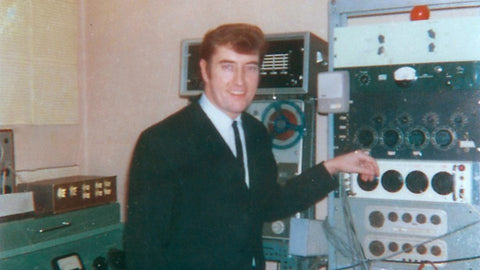**\n\n**Joe Meek** may very well be rock's first independent producer/auteur. He is like an early rock & roll Lee Perry, a man with a strong artistic inclination and a home studio, eccentric tendencies and behaviors, and experimental processes to create otherwordly results.\n\nHe had a background as an electrician and started cutting his own records in the '50s. He set up perhaps the first home recording studio in rock (he loved to bother his neighbors). He produced \"Tornado\", a major international hit by the Telstars in '62, becoming the first British group to top the US charts.\n\nHe utilized separation of instruments, lots of effects and echo/reverb, early sampling techniques, processing through homemade electronics, messing with tape speed and other innovations. He created early electronic pop experiments and often would give the songs spooky string backdrops.\n\nAll told he produced thousands of recordings of pop, rock & roll, jazz, R&B and calypso, as well as providing music for radio & film. In addition to hundreds of unknown artists and groups he worked with Tom Jones, Shirley Bassey, the futuristic Blue Men, Lonnie Donegan, Petula Clark, Billy Fury, the Honeycombs, Screaming Lord Sutch, Gene Vincent and others...with instrumentalists on sessions including young David Bowie (whom he rejected working with later), Jimmy Page, Richie Blackmore and others.\n\nAnd here's what he said after rejecting the Beatles: \"just another bunch of noise, copying other people's music\". He sort of fell behind the times with the hippy revolution and his own demons helped lead him to his violent end. But he is considered one of the most innovative and important engineers in the history of pop music.",
"filePath": "content/posts/joe-meek-april-5-1929-feb-3-1967.md",
"digest": "c10889449d6fb12a",
"rendered": {
"html": "<p><strong><img src=\"/images/p01bqjmk_large.jpg\" alt=\"\"></strong></p>\n<p><strong>Joe Meek</strong> may very well be rock’s first independent producer/auteur. He is like an early rock & roll Lee Perry, a man with a strong artistic inclination and a home studio, eccentric tendencies and behaviors, and experimental processes to create otherwordly results.</p>\n<p>He had a background as an electrician and started cutting his own records in the ’50s. He set up perhaps the first home recording studio in rock (he loved to bother his neighbors). He produced “Tornado”, a major international hit by the Telstars in ‘62, becoming the first British group to top the US charts.</p>\n<p>He utilized separation of instruments, lots of effects and echo/reverb, early sampling techniques, processing through homemade electronics, messing with tape speed and other innovations. He created early electronic pop experiments and often would give the songs spooky string backdrops.</p>\n<p>All told he produced thousands of recordings of pop, rock & roll, jazz, R&B and calypso, as well as providing music for radio & film. In addition to hundreds of unknown artists and groups he worked with Tom Jones, Shirley Bassey, the futuristic Blue Men, Lonnie Donegan, Petula Clark, Billy Fury, the Honeycombs, Screaming Lord Sutch, Gene Vincent and others…with instrumentalists on sessions including young David Bowie (whom he rejected working with later), Jimmy Page, Richie Blackmore and others.</p>\n<p>And here’s what he said after rejecting the Beatles: “just another bunch of noise, copying other people’s music”. He sort of fell behind the times with the hippy revolution and his own demons helped lead him to his violent end. But he is considered one of the most innovative and important engineers in the history of pop music.</p>",
"metadata": {
"headings": [],
"localImagePaths": [],
"remoteImagePaths": [],
"frontmatter": {
"web-scraper-order": "1746561428-217",
"web-scraper-start-url": "https://peaceandrhythm.com",
"title": "Joe Meek / April 5, 1929 - Feb 3, 1967",
"pagination": "https://www.peaceandrhythm.com/?page=69",
"date": "April 05, 2017",
"post": "Joe Meek / April 5, 1929 - Feb 3, 1967",
"post-href": "https://www.peaceandrhythm.com/blogs/news/joe-meek-april-5-1929-feb-3-1967",
"slug": "joe-meek-april-5-1929-feb-3-1967"
},
"imagePaths": []
}
},
"collection": "blog"
},
{
"id": "chocolate-armenteros-april-4-1928-jan-6-2016",
"data": {
"title": "\"Chocolate\" Armenteros / April 4, 1928 - Jan 6, 2016",
"slug": "chocolate-armenteros-april-4-1928-jan-6-2016",
"date": "2017-04-04T00:00:00.000Z"
},
"body": "**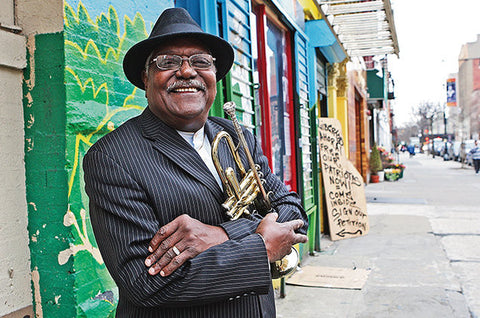**\n\n**Alfredo \"Chocolate\" Armenteros** is my favorite of the great Cuban trumpeters. He had a powerhouse sound that could be brash and forceful, or sweet and lyrical. He got his professional start while still in Cuba, cutting his first sides in '49 with René Álvarez. The '50s saw him busy with Arsenio Rodriguez and Beny Moré. He also played with Nat King Cole on the pianists' Cuban sessions.\n\nHe came to NYC in 1960 and got a lot of work doing sessions and playing in several bands. He played consistently with Eddie Palmieri from the late '60s through the '70s. In the early '80s he was associated with S.A.R., playing in the studio band and recording his own albums. He also worked with José Fajardo, Cachao, the awesome Grupo Folklorico y Experimental Nuevayorquino, Mongo Santamaría, Cedar Walton, Kip Hanrahan, Robin Jones and really, just about everyone.\n\nHe could be heard in a variety of settings, from folksy Cuban ensembles to hard-driving salsa, mambo big band, jazz/descarga, calypso, funk and more. He passed away in 2016, somehow not receiving the level the attention as many others did, despite how important of a musician he was.",
"filePath": "content/posts/chocolate-armenteros-april-4-1928-jan-6-2016.md",
"digest": "aa237aac6c463ae5",
"rendered": {
"html": "<p><strong><img src=\"/images/Chocolate-Armenteros-2016-billboard-650_large.jpg\" alt=\"\"></strong></p>\n<p><strong>Alfredo “Chocolate” Armenteros</strong> is my favorite of the great Cuban trumpeters. He had a powerhouse sound that could be brash and forceful, or sweet and lyrical. He got his professional start while still in Cuba, cutting his first sides in ‘49 with René Álvarez. The ’50s saw him busy with Arsenio Rodriguez and Beny Moré. He also played with Nat King Cole on the pianists’ Cuban sessions.</p>\n<p>He came to NYC in 1960 and got a lot of work doing sessions and playing in several bands. He played consistently with Eddie Palmieri from the late ’60s through the ’70s. In the early ’80s he was associated with S.A.R., playing in the studio band and recording his own albums. He also worked with José Fajardo, Cachao, the awesome Grupo Folklorico y Experimental Nuevayorquino, Mongo Santamaría, Cedar Walton, Kip Hanrahan, Robin Jones and really, just about everyone.</p>\n<p>He could be heard in a variety of settings, from folksy Cuban ensembles to hard-driving salsa, mambo big band, jazz/descarga, calypso, funk and more. He passed away in 2016, somehow not receiving the level the attention as many others did, despite how important of a musician he was.</p>",
"metadata": {
"headings": [],
"localImagePaths": [],
"remoteImagePaths": [],
"frontmatter": {
"web-scraper-order": "1746561426-216",
"web-scraper-start-url": "https://peaceandrhythm.com",
"title": "\"Chocolate\" Armenteros / April 4, 1928 - Jan 6, 2016",
"pagination": "https://www.peaceandrhythm.com/?page=69",
"date": "April 04, 2017",
"post": "\"Chocolate\" Armenteros / April 4, 1928 - Jan 6, 2016",
"post-href": "https://www.peaceandrhythm.com/blogs/news/chocolate-armenteros-april-4-1928-jan-6-2016",
"slug": "chocolate-armenteros-april-4-1928-jan-6-2016"
},
"imagePaths": []
}
},
"collection": "blog"
},
{
"id": "muddy-waters-april-4-1913-april-30-1983",
"data": {
"title": "Muddy Waters / April 4, 1913(?) - April 30, 1983",
"slug": "muddy-waters-april-4-1913-april-30-1983",
"date": "2017-04-04T00:00:00.000Z"
},
"body": "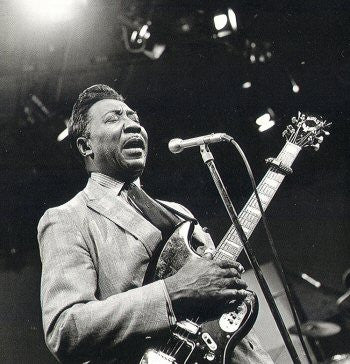\n\nMcKinley Morganfield's name was awesome enough but he had to go and start being called **Muddy Waters** , which is like the old bluesman equivilent of a punk rock name. But that is an appropriate analogy since his loud & electrified folk-blues was the punk of its generation. Without Muddy, the path to Chicago blues, rock, metal and punk might've taken other roads.\n\nOf questionable birth year, Muddy came from the musically fertile area of Clarksdale, Mississippi. He started playing harmonica but switched to guitar after hearing Son House. Alan Lomax was the first to record him (in '41, right in Muddy's house). After achieving regional success around Mississippi, he moved to Chicago in '43 and plugged in around '45, and the amplification helped him stand out in the loud bars. He recorded for Okeh and others before having massive success with Chess, with whom he started working for in '47.\n\nHis early '50s band was seriously hot shit, with Little Walter, Otis Spann & Willie Dixon, and they became the ruling band of Chicago. Muddy toured England in '58, giving the Brits their first taste of electric blues (which of course blew minds). He played the Newport Jazz Fest in '60.\n\nWith his major influence on the entire world of rock & roll it was natural that he would hook up with some of the psychedelic generation (_Electric Mud_ being a famed example). The '70s and '80s brought a fruitful collaboration with Johnny Winter and he also played with the Rolling Stones. (I wonder where they got their name, haha).\n\nHe wrote or adapted some of the longest-lasting and most impactful tunes in the blues book. All the best '60s rockers covered his songs: Jimi Hendrix, Led Zeppelin, Stones, Cream, Bob Dylan, the Allman Brothers, Canned Heat and others. His music bridged country-blues with rock. He also played jazz, country, folk and some pretty hard rockin' stuff as well, and remained absolutely relevant as a performer right til the end. He stands as one of the most important and influential musicians of history.",
"filePath": "content/posts/muddy-waters-april-4-1913-april-30-1983.md",
"digest": "c3161d165119cda3",
"rendered": {
"html": "<p><img src=\"/images/waters_muddy_large.jpg\" alt=\"\"></p>\n<p>McKinley Morganfield’s name was awesome enough but he had to go and start being called <strong>Muddy Waters</strong> , which is like the old bluesman equivilent of a punk rock name. But that is an appropriate analogy since his loud & electrified folk-blues was the punk of its generation. Without Muddy, the path to Chicago blues, rock, metal and punk might’ve taken other roads.</p>\n<p>Of questionable birth year, Muddy came from the musically fertile area of Clarksdale, Mississippi. He started playing harmonica but switched to guitar after hearing Son House. Alan Lomax was the first to record him (in ‘41, right in Muddy’s house). After achieving regional success around Mississippi, he moved to Chicago in ‘43 and plugged in around ‘45, and the amplification helped him stand out in the loud bars. He recorded for Okeh and others before having massive success with Chess, with whom he started working for in ‘47.</p>\n<p>His early ’50s band was seriously hot shit, with Little Walter, Otis Spann & Willie Dixon, and they became the ruling band of Chicago. Muddy toured England in ‘58, giving the Brits their first taste of electric blues (which of course blew minds). He played the Newport Jazz Fest in ‘60.</p>\n<p>With his major influence on the entire world of rock & roll it was natural that he would hook up with some of the psychedelic generation (<em>Electric Mud</em> being a famed example). The ’70s and ’80s brought a fruitful collaboration with Johnny Winter and he also played with the Rolling Stones. (I wonder where they got their name, haha).</p>\n<p>He wrote or adapted some of the longest-lasting and most impactful tunes in the blues book. All the best ’60s rockers covered his songs: Jimi Hendrix, Led Zeppelin, Stones, Cream, Bob Dylan, the Allman Brothers, Canned Heat and others. His music bridged country-blues with rock. He also played jazz, country, folk and some pretty hard rockin’ stuff as well, and remained absolutely relevant as a performer right til the end. He stands as one of the most important and influential musicians of history.</p>",
"metadata": {
"headings": [],
"localImagePaths": [],
"remoteImagePaths": [],
"frontmatter": {
"web-scraper-order": "1746561423-215",
"web-scraper-start-url": "https://peaceandrhythm.com",
"title": "Muddy Waters / April 4, 1913(?) - April 30, 1983",
"pagination": "https://www.peaceandrhythm.com/?page=69",
"date": "April 04, 2017",
"post": "Muddy Waters / April 4, 1913(?) - April 30, 1983",
"post-href": "https://www.peaceandrhythm.com/blogs/news/muddy-waters-april-4-1913-april-30-1983",
"slug": "muddy-waters-april-4-1913-april-30-1983"
},
"imagePaths": []
}
},
"collection": "blog"
},
{
"id": "jimmy-nolen-april-3-1934-dec-18-1983",
"data": {
"title": "Jimmy Nolen / April 3, 1934 - Dec 18, 1983",
"slug": "jimmy-nolen-april-3-1934-dec-18-1983",
"date": "2017-04-03T00:00:00.000Z"
},
"body": "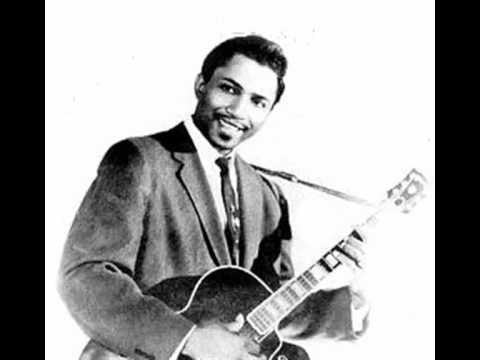\n\nHere's a birthday shout to **Jimmy \"Chank\" Nolen** , the \"chicken scratch\" guitar player with the James Brown band, and a crucial part of his sound. He came from Oklahoma City, first playing the violin before switching to guitar, inspired by T Bone Walker. He then went to Los Angeles in the mid-'50s and cut some tunes as a leader before joining the Johnny Otis band in '57. In fact, Nolen's \"chicken scratch\" sound can be heard on Otis' seminal \"Willie & the Hand Jive\" from '58. He brought the sound to J.B. in '65, just in time to contribute to the revolutionary \"Papa's Got A Brand New Bag\".\n\nSave for the infamous mutiny of '71/72 in which Brown's band protestingly left to play with Maceo Parker, Nolen played with Brown til '83, when Nolen died of a heart attack. His style contributed greatly to the creation of the JB super-heavy funk sound. Whether you know his name or not, Jimmy Nolen is one of the most important guitar players to ever grace the planet, and certainly a major contributor to what we call FUNK.\n\nHere's an early ('56) single by Nolen as a bandleader:\n\nAnd another one, recently reissued on 45 by Jazzman:\n\nWith the Johnny Otis band in '58:\n\nNolen lends his guitar to the revolution:",
"filePath": "content/posts/jimmy-nolen-april-3-1934-dec-18-1983.md",
"digest": "2731e0026e165a31",
"rendered": {
"html": "<p><img src=\"/images/hqdefault_6aa7e4ac-f195-402b-9e71-9851f1e37807_large.jpg\" alt=\"\"></p>\n<p>Here’s a birthday shout to <strong>Jimmy “Chank” Nolen</strong> , the “chicken scratch” guitar player with the James Brown band, and a crucial part of his sound. He came from Oklahoma City, first playing the violin before switching to guitar, inspired by T Bone Walker. He then went to Los Angeles in the mid-’50s and cut some tunes as a leader before joining the Johnny Otis band in ‘57. In fact, Nolen’s “chicken scratch” sound can be heard on Otis’ seminal “Willie & the Hand Jive” from ‘58. He brought the sound to J.B. in ‘65, just in time to contribute to the revolutionary “Papa’s Got A Brand New Bag”.</p>\n<p>Save for the infamous mutiny of ‘71/72 in which Brown’s band protestingly left to play with Maceo Parker, Nolen played with Brown til ‘83, when Nolen died of a heart attack. His style contributed greatly to the creation of the JB super-heavy funk sound. Whether you know his name or not, Jimmy Nolen is one of the most important guitar players to ever grace the planet, and certainly a major contributor to what we call FUNK.</p>\n<p>Here’s an early (‘56) single by Nolen as a bandleader:</p>\n<p>And another one, recently reissued on 45 by Jazzman:</p>\n<p>With the Johnny Otis band in ‘58:</p>\n<p>Nolen lends his guitar to the revolution:</p>",
"metadata": {
"headings": [],
"localImagePaths": [],
"remoteImagePaths": [],
"frontmatter": {
"web-scraper-order": "1746561418-213",
"web-scraper-start-url": "https://peaceandrhythm.com",
"title": "Jimmy Nolen / April 3, 1934 - Dec 18, 1983",
"pagination": "https://www.peaceandrhythm.com/?page=70",
"date": "April 03, 2017",
"post": "Jimmy Nolen / April 3, 1934 - Dec 18, 1983",
"post-href": "https://www.peaceandrhythm.com/blogs/news/jimmy-nolen-april-3-1934-dec-18-1983",
"slug": "jimmy-nolen-april-3-1934-dec-18-1983"
},
"imagePaths": []
}
},
"collection": "blog"
},
{
"id": "scott-lafaro-april-3-1936-july-6-1961",
"data": {
"title": "Scott LaFaro / April 3, 1936 - July 6, 1961",
"slug": "scott-lafaro-april-3-1936-july-6-1961",
"date": "2017-04-03T00:00:00.000Z"
},
"body": "\n\nAlthough he only lived to be 25, **Scott LaFaro** is one of the most advanced and influential jazz bassists the music had ever seen. His playing brought melodicism, exploration, voice and intuitive interplay to a whole new level and subsequently inspired generations of bassists since.\n\nAlthough best known for his work with Bill Evans and Ornette Coleman, he also played with Hampton Hawes, Booker Little, Stan Getz & Cal Tjader, Elvin Jones, Stan Kenton, John Lewis, Chet Baker and Benny Goodman, among others. He was one of the two bassists (with Charlie Haden) on the classic 1960 Ornette session that was _Free Jazz_.\n\nHe was the most in-demand bassist during his short life. The trio of him, Evans and Paul Motian remains a highwater mark for the format. Ten days before LaFaro's death they played at the Village Vanguard, the concert was taped and two classic albums came from it (_Sunday Night At The Village Vanguard_ and _Waltz For Debby_). But a car accident cut short his genius at 25, although his influence remains absolutely huge.\n\nHere's the '61 classic, _Waltz For Debby_ :\n\nAnd another great one with the Hampton Hawes band, 1958:\n\nAnd of course LaFaro was a contributor to the music of Ornette:\n\nAnd as an added treat, here is some rare footage of LaFaro in action:",
"filePath": "content/posts/scott-lafaro-april-3-1936-july-6-1961.md",
"digest": "902336bd666f56b1",
"rendered": {
"html": "<p><img src=\"/images/scott-lafaro-620x413_large.jpg\" alt=\"\"></p>\n<p>Although he only lived to be 25, <strong>Scott LaFaro</strong> is one of the most advanced and influential jazz bassists the music had ever seen. His playing brought melodicism, exploration, voice and intuitive interplay to a whole new level and subsequently inspired generations of bassists since.</p>\n<p>Although best known for his work with Bill Evans and Ornette Coleman, he also played with Hampton Hawes, Booker Little, Stan Getz & Cal Tjader, Elvin Jones, Stan Kenton, John Lewis, Chet Baker and Benny Goodman, among others. He was one of the two bassists (with Charlie Haden) on the classic 1960 Ornette session that was <em>Free Jazz</em>.</p>\n<p>He was the most in-demand bassist during his short life. The trio of him, Evans and Paul Motian remains a highwater mark for the format. Ten days before LaFaro’s death they played at the Village Vanguard, the concert was taped and two classic albums came from it (<em>Sunday Night At The Village Vanguard</em> and <em>Waltz For Debby</em>). But a car accident cut short his genius at 25, although his influence remains absolutely huge.</p>\n<p>Here’s the ‘61 classic, <em>Waltz For Debby</em> :</p>\n<p>And another great one with the Hampton Hawes band, 1958:</p>\n<p>And of course LaFaro was a contributor to the music of Ornette:</p>\n<p>And as an added treat, here is some rare footage of LaFaro in action:</p>",
"metadata": {
"headings": [],
"localImagePaths": [],
"remoteImagePaths": [],
"frontmatter": {
"web-scraper-order": "1746561420-214",
"web-scraper-start-url": "https://peaceandrhythm.com",
"title": "Scott LaFaro / April 3, 1936 - July 6, 1961",
"pagination": "https://www.peaceandrhythm.com/?page=69",
"date": "April 03, 2017",
"post": "Scott LaFaro / April 3, 1936 - July 6, 1961",
"post-href": "https://www.peaceandrhythm.com/blogs/news/scott-lafaro-april-3-1936-july-6-1961",
"slug": "scott-lafaro-april-3-1936-july-6-1961"
},
"imagePaths": []
}
},
"collection": "blog"
},
{
"id": "marvin-gaye-april-2-1939-april-1-1984",
"data": {
"title": "Marvin Gaye / April 2, 1939 - April 1, 1984",
"slug": "marvin-gaye-april-2-1939-april-1-1984",
"date": "2017-04-02T00:00:00.000Z"
},
"body": "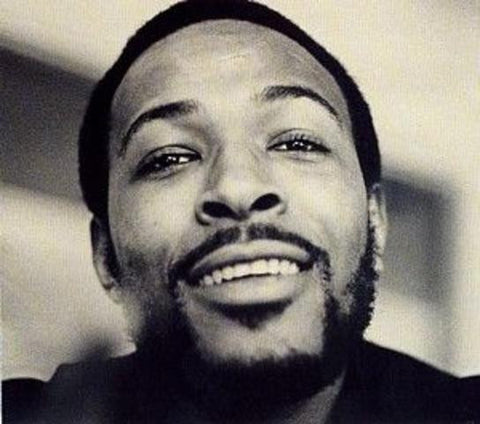\n\nBorn today, one of the kings of soul music, **Marvin Gaye**. Is there anyone in the world who doesn't like his music?",
"filePath": "content/posts/marvin-gaye-april-2-1939-april-1-1984.md",
"digest": "ed37c4285719617e",
"rendered": {
"html": "<p><img src=\"/images/Marvin-Gaye_large.jpg\" alt=\"\"></p>\n<p>Born today, one of the kings of soul music, <strong>Marvin Gaye</strong>. Is there anyone in the world who doesn’t like his music?</p>",
"metadata": {
"headings": [],
"localImagePaths": [],
"remoteImagePaths": [],
"frontmatter": {
"web-scraper-order": "1746561415-212",
"web-scraper-start-url": "https://peaceandrhythm.com",
"title": "Marvin Gaye / April 2, 1939 - April 1, 1984",
"pagination": "https://www.peaceandrhythm.com/?page=70",
"date": "April 02, 2017",
"post": "Marvin Gaye / April 2, 1939 - April 1, 1984",
"post-href": "https://www.peaceandrhythm.com/blogs/news/marvin-gaye-april-2-1939-april-1-1984",
"slug": "marvin-gaye-april-2-1939-april-1-1984"
},
"imagePaths": []
}
},
"collection": "blog"
},
{
"id": "d-boon-april-1-1958-dec-22-1985",
"data": {
"title": "D. Boon / April 1, 1958 - Dec 22, 1985",
"slug": "d-boon-april-1-1958-dec-22-1985",
"date": "2017-04-01T00:00:00.000Z"
},
"body": "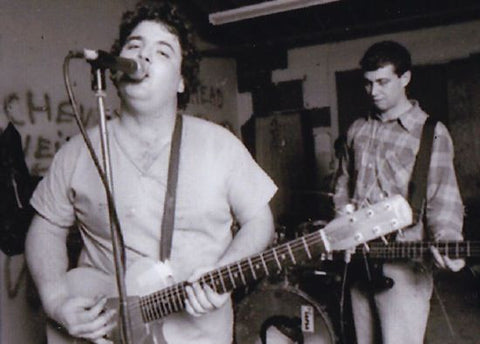\n\nMinutemen guitarist & vocalist **D. Boon** died in a van accident at the far too young age of 27, but is still considered a punk rock icon. The band gained respect as one of the best and most inventive, as well as politically aware (evident in D. Boon's lyrical contributions) bands of the '80s underground. They toured heavily and recorded for SST Records, as well as New Alliance (a label started by the band).\n\nMusically they brought jazz, punk, funk & country together into short song blasts (\"jam econo\") and included some covers (parodies?) of classic rock tunes. It all came to a halt with Boon's young end. The legacy is huge.",
"filePath": "content/posts/d-boon-april-1-1958-dec-22-1985.md",
"digest": "f63180baba26e9b3",
"rendered": {
"html": "<p><img src=\"/images/62e24c2e1f48700d14afd4e968782dea_large.jpg\" alt=\"\"></p>\n<p>Minutemen guitarist & vocalist <strong>D. Boon</strong> died in a van accident at the far too young age of 27, but is still considered a punk rock icon. The band gained respect as one of the best and most inventive, as well as politically aware (evident in D. Boon’s lyrical contributions) bands of the ’80s underground. They toured heavily and recorded for SST Records, as well as New Alliance (a label started by the band).</p>\n<p>Musically they brought jazz, punk, funk & country together into short song blasts (“jam econo”) and included some covers (parodies?) of classic rock tunes. It all came to a halt with Boon’s young end. The legacy is huge.</p>",
"metadata": {
"headings": [],
"localImagePaths": [],
"remoteImagePaths": [],
"frontmatter": {
"web-scraper-order": "1746561413-211",
"web-scraper-start-url": "https://peaceandrhythm.com",
"title": "D. Boon / April 1, 1958 - Dec 22, 1985",
"pagination": "https://www.peaceandrhythm.com/?page=70",
"date": "April 01, 2017",
"post": "D. Boon / April 1, 1958 - Dec 22, 1985",
"post-href": "https://www.peaceandrhythm.com/blogs/news/d-boon-april-1-1958-dec-22-1985",
"slug": "d-boon-april-1-1958-dec-22-1985"
},
"imagePaths": []
}
},
"collection": "blog"
},
{
"id": "gil-scott-heron-april-1-1949-may-27-2011",
"data": {
"title": "Gil Scott-Heron / April 1, 1949 - May 27, 2011",
"slug": "gil-scott-heron-april-1-1949-may-27-2011",
"date": "2017-04-01T00:00:00.000Z"
},
"body": "\n\nToday is the birthday of one of my very favorites!! The poet/vocalist/songwriter/novelist **Gil Scott-Heron** was one of the great lyricists of all time, combining the personal and political, and as a vocalist he would weave his stories into the fantastic soul-jazz tunes he cooked up with Brian Jackson. The music contained elements of blues, jazz, Latin and funk, and he has been justly considered a precursor to hip-hop, with GSH's \"rapping\" delivery and socio-political consciousness.\n\nHe was inspired by a performance he saw by the Last Poets and released _Small Talk At 125th & Lennox_ in 1970. He started working with Jackson and made a classic run of great albums in the '70s. (_Pieces Of A Man_ stands as one of my personal favorite albums). Aside from Last Poets, he has also cited Malcolm X, the Black Panthers, Richie Havens and \"Lady Day & John Coltrane\" as being major influences. Later years saw him serving some time for drug charges, but also appeared with Blackalicious and others in cameo spots. He released a final album, _I'm New Here_ , shortly before his death. GSH described himself as a \"bluesologist\".\n\nI am not a very emotional guy but there's something about Gil Scott-Heron (like with Leonard Cohen and John Coltrane) that chokes me up when I hear his music. Sure, call me an emo wimp but the man's words can express the range of living, from tough, yet desperate to positive and joyous, yet always as real as it gets. The unfortunate circumstances of his life prove how small and insignificant we really are, but yet we soldier on however we can.\n\nHere's a few of my favorite of his tunes:\n\n And here's Robert Mugge's 1982 film _Black Wax_ :",
"filePath": "content/posts/gil-scott-heron-april-1-1949-may-27-2011.md",
"digest": "edfcf3e50431c95b",
"rendered": {
"html": "<p><img src=\"/images/th_7a7e9968-aacb-4e81-885f-682210b41b0e_large.jpg\" alt=\"\"></p>\n<p>Today is the birthday of one of my very favorites!! The poet/vocalist/songwriter/novelist <strong>Gil Scott-Heron</strong> was one of the great lyricists of all time, combining the personal and political, and as a vocalist he would weave his stories into the fantastic soul-jazz tunes he cooked up with Brian Jackson. The music contained elements of blues, jazz, Latin and funk, and he has been justly considered a precursor to hip-hop, with GSH’s “rapping” delivery and socio-political consciousness.</p>\n<p>He was inspired by a performance he saw by the Last Poets and released <em>Small Talk At 125th & Lennox</em> in 1970. He started working with Jackson and made a classic run of great albums in the ’70s. (<em>Pieces Of A Man</em> stands as one of my personal favorite albums). Aside from Last Poets, he has also cited Malcolm X, the Black Panthers, Richie Havens and “Lady Day & John Coltrane” as being major influences. Later years saw him serving some time for drug charges, but also appeared with Blackalicious and others in cameo spots. He released a final album, <em>I’m New Here</em> , shortly before his death. GSH described himself as a “bluesologist”.</p>\n<p>I am not a very emotional guy but there’s something about Gil Scott-Heron (like with Leonard Cohen and John Coltrane) that chokes me up when I hear his music. Sure, call me an emo wimp but the man’s words can express the range of living, from tough, yet desperate to positive and joyous, yet always as real as it gets. The unfortunate circumstances of his life prove how small and insignificant we really are, but yet we soldier on however we can.</p>\n<p>Here’s a few of my favorite of his tunes:</p>\n<p>And here’s Robert Mugge’s 1982 film <em>Black Wax</em> :</p>",
"metadata": {
"headings": [],
"localImagePaths": [],
"remoteImagePaths": [],
"frontmatter": {
"web-scraper-order": "1746561411-210",
"web-scraper-start-url": "https://peaceandrhythm.com",
"title": "Gil Scott-Heron / April 1, 1949 - May 27, 2011",
"pagination": "https://www.peaceandrhythm.com/?page=70",
"date": "April 01, 2017",
"post": "Gil Scott-Heron / April 1, 1949 - May 27, 2011",
"post-href": "https://www.peaceandrhythm.com/blogs/news/gil-scott-heron-april-1-1949-may-27-2011",
"slug": "gil-scott-heron-april-1-1949-may-27-2011"
},
"imagePaths": []
}
},
"collection": "blog"
},
{
"id": "lowell-fulson-march-31-1921-march-7-1999",
"data": {
"title": "Lowell Fulson / March 31, 1921 - March 7, 1999",
"slug": "lowell-fulson-march-31-1921-march-7-1999",
"date": "2017-03-31T00:00:00.000Z"
},
"body": "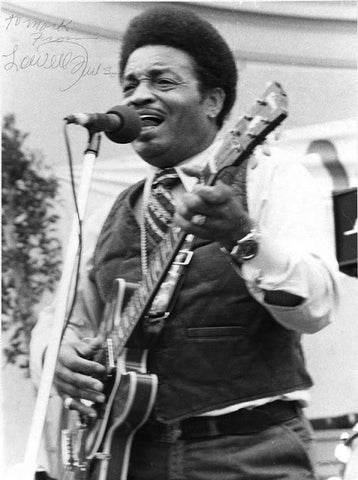\n\nThe soulful blues guitarist with Cherokee/Choctaw roots, **Lowell Fulson** , was as great a representative of West Coast blues as there ever has been. Born in Oklahoma, he hit California in the mid-'40s and formed a band that employed youngsters Ray Charles & Stanley Turrentine. He cut records for Aladdin, Swing Time, Checker, Jewel, Kent, Bullseye and more in his long career.\n\nHe was the composer of the standard \"Three O'clock Blues\" (1948), \"Reconsider Baby\" (1954) (recorded by Elvis in '60) and the awesomely funky \"Tramp\" ('67) which was covered by Otis Redding & Carla Thomas, Salt N' Pepa, The Mohawks (as \"Champ\"), ZZ Top, Alex Chilton, Junior Kimbrough, Steve Miller and many others, as well as being often sampled (Cypress Hill, Redman, EPMD, Prince, De La Soul and others, not to mention how many times the Mohawks & Otis versions have been sampled).\n\nHis tunes were also covered by Ray Charles, Eric Clapton and others. He popularized \"Everyday I Have The Blues\" and also did a classic version of \"Why Don't We Do It In The Road\". His music covered rootsy & urban blues, funk and rock.",
"filePath": "content/posts/lowell-fulson-march-31-1921-march-7-1999.md",
"digest": "d6409bd7df5afe41",
"rendered": {
"html": "<p><img src=\"/images/Lowell-Fulson_large.jpg\" alt=\"\"></p>\n<p>The soulful blues guitarist with Cherokee/Choctaw roots, <strong>Lowell Fulson</strong> , was as great a representative of West Coast blues as there ever has been. Born in Oklahoma, he hit California in the mid-’40s and formed a band that employed youngsters Ray Charles & Stanley Turrentine. He cut records for Aladdin, Swing Time, Checker, Jewel, Kent, Bullseye and more in his long career.</p>\n<p>He was the composer of the standard “Three O’clock Blues” (1948), “Reconsider Baby” (1954) (recorded by Elvis in ‘60) and the awesomely funky “Tramp” (‘67) which was covered by Otis Redding & Carla Thomas, Salt N’ Pepa, The Mohawks (as “Champ”), ZZ Top, Alex Chilton, Junior Kimbrough, Steve Miller and many others, as well as being often sampled (Cypress Hill, Redman, EPMD, Prince, De La Soul and others, not to mention how many times the Mohawks & Otis versions have been sampled).</p>\n<p>His tunes were also covered by Ray Charles, Eric Clapton and others. He popularized “Everyday I Have The Blues” and also did a classic version of “Why Don’t We Do It In The Road”. His music covered rootsy & urban blues, funk and rock.</p>",
"metadata": {
"headings": [],
"localImagePaths": [],
"remoteImagePaths": [],
"frontmatter": {
"web-scraper-order": "1746561408-209",
"web-scraper-start-url": "https://peaceandrhythm.com",
"title": "Lowell Fulson / March 31, 1921 - March 7, 1999",
"pagination": "https://www.peaceandrhythm.com/?page=70",
"date": "March 31, 2017",
"post": "Lowell Fulson / March 31, 1921 - March 7, 1999",
"post-href": "https://www.peaceandrhythm.com/blogs/news/lowell-fulson-march-31-1921-march-7-1999",
"slug": "lowell-fulson-march-31-1921-march-7-1999"
},
"imagePaths": []
}
},
"collection": "blog"
},
{
"id": "sonny-boy-williamson-i-march-30-1914-june-1-1948",
"data": {
"title": "Sonny Boy Williamson I / March 30, 1914 - June 1, 1948",
"slug": "sonny-boy-williamson-i-march-30-1914-june-1-1948",
"date": "2017-03-30T00:00:00.000Z"
},
"body": "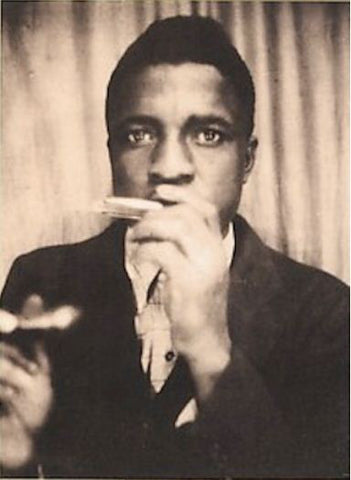\n\nDespite being two years younger than the other **Sonny Boy Williamson** (II), this one (born John Lee Curtis Williamson in Tennessee) was on the scene in the '30s and '40s before his murder in a robbery after a gig. He was only 34. \n\nHis early travels came alongside Sleepy John Estes and Yank Rachell. Settling in Chicago around '34, his first record was \"Good Morning, School Girl\" (1937), which became a blues standard for ever after. He cut a bunch of sides for the Bluebird label as a leader and also appeared as a sideman on hundreds of recordings. His bands in the '40s included a young Muddy Waters, as well as Tampa Red.\n\nHe popularized the blues harmonica as a band-leading instrument and inspired many who came after him, including Junior Wells, Little Walter, Billy Boy Arnold and of course the guy who profited from stealing his name, the other Sonny Boy Williamson. His call-and-response vocal with his harmonica set the tend. So here's a shout out to the ORIGINAL Mr Sonny Boy Williamson.",
"filePath": "content/posts/sonny-boy-williamson-i-march-30-1914-june-1-1948.md",
"digest": "ff762108d00fb55e",
"rendered": {
"html": "<p><img src=\"/images/A-746951-1349131161-8466_jpeg_large.jpg\" alt=\"\"></p>\n<p>Despite being two years younger than the other <strong>Sonny Boy Williamson</strong> (II), this one (born John Lee Curtis Williamson in Tennessee) was on the scene in the ’30s and ’40s before his murder in a robbery after a gig. He was only 34.</p>\n<p>His early travels came alongside Sleepy John Estes and Yank Rachell. Settling in Chicago around ‘34, his first record was “Good Morning, School Girl” (1937), which became a blues standard for ever after. He cut a bunch of sides for the Bluebird label as a leader and also appeared as a sideman on hundreds of recordings. His bands in the ’40s included a young Muddy Waters, as well as Tampa Red.</p>\n<p>He popularized the blues harmonica as a band-leading instrument and inspired many who came after him, including Junior Wells, Little Walter, Billy Boy Arnold and of course the guy who profited from stealing his name, the other Sonny Boy Williamson. His call-and-response vocal with his harmonica set the tend. So here’s a shout out to the ORIGINAL Mr Sonny Boy Williamson.</p>",
"metadata": {
"headings": [],
"localImagePaths": [],
"remoteImagePaths": [],
"frontmatter": {
"web-scraper-order": "1746561405-208",
"web-scraper-start-url": "https://peaceandrhythm.com",
"title": "Sonny Boy Williamson I / March 30, 1914 - June 1, 1948",
"pagination": "https://www.peaceandrhythm.com/?page=71",
"date": "March 30, 2017",
"post": "Sonny Boy Williamson I / March 30, 1914 - June 1, 1948",
"post-href": "https://www.peaceandrhythm.com/blogs/news/sonny-boy-williamson-i-march-30-1914-june-1-1948",
"slug": "sonny-boy-williamson-i-march-30-1914-june-1-1948"
},
"imagePaths": []
}
},
"collection": "blog"
},
{
"id": "camille-howard-march-29-1914-march-10-1993",
"data": {
"title": "Camille Howard / March 29, 1914 - March 10, 1993",
"slug": "camille-howard-march-29-1914-march-10-1993",
"date": "2017-03-29T00:00:00.000Z"
},
"body": "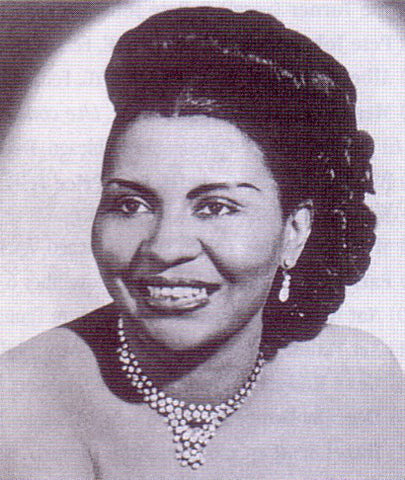\n\nBlues-boogie piano star **Camille Howard** was one of the better known female talents of the early R&B and jump-blues years. One of the finest blues piano players of the era, she rocked the Los Angeles scene with her own groups, as well as with her husband Roy Milton's band as pianist and occasional singer (and he drummed on many of her records).\n\nOut of Galveston TX, she was performing in the local Texas nightclubs by the mid-'30s. She moved to California in the early '40s and joined Milton's band, making her recorded debut with them in '45 for Lionel Hampton's Hamp-Tone label. The first title under her own name appeared in '46 on a small local label. She recorded a bunch of tunes for Specialty from '46-52, as well as Federal and Vee-Jay, ranging from slammin' boogie to jazzy/mambo-ish numbers to ballads.\n\nTunes like \"Excite Me Daddy\" and \"Ivory Pick Boogie\" sound as proto-rock & roll as anything. \"Within This Heart of Mine\" has Latin conga added. \"Thrill Me\", featuring Camille's vocal, was a big hit for the Roy Milton Trio in '47 and she cut her first hit of her own, \"X-Temporaneous Boogie\" (improvised in the studio), the day before the recording ban began (on New Year's Day, '48). \"Money Blues\", credited to Camille Howard & her Boyfriends, was a big one in '51. She toured with Jimmy Witherspoon, Joe Tex and others. In the late '50s she retired from commercial music and went the religious way. That was all anyone heard from her.\n\nThere are two good volumes of her music worth checking out via Ace Records, _Rock Me Daddy_ and _X-Temperaneous Boogie._ Both have great tunes, including a whole lot of previously unreleased, yet worthy, material. In recent years Jazzman has dropped a couple of 45 reissues and included her on their excellent _Jukebox Mambo_ series.\n\nCheck out a selection of some favorites of mine:",
"filePath": "content/posts/camille-howard-march-29-1914-march-10-1993.md",
"digest": "c8c7409b67c94448",
"rendered": {
"html": "<p><img src=\"/images/A-843815-1212424777_jpeg_large.jpg\" alt=\"\"></p>\n<p>Blues-boogie piano star <strong>Camille Howard</strong> was one of the better known female talents of the early R&B and jump-blues years. One of the finest blues piano players of the era, she rocked the Los Angeles scene with her own groups, as well as with her husband Roy Milton’s band as pianist and occasional singer (and he drummed on many of her records).</p>\n<p>Out of Galveston TX, she was performing in the local Texas nightclubs by the mid-’30s. She moved to California in the early ’40s and joined Milton’s band, making her recorded debut with them in ‘45 for Lionel Hampton’s Hamp-Tone label. The first title under her own name appeared in ‘46 on a small local label. She recorded a bunch of tunes for Specialty from ‘46-52, as well as Federal and Vee-Jay, ranging from slammin’ boogie to jazzy/mambo-ish numbers to ballads.</p>\n<p>Tunes like “Excite Me Daddy” and “Ivory Pick Boogie” sound as proto-rock & roll as anything. “Within This Heart of Mine” has Latin conga added. “Thrill Me”, featuring Camille’s vocal, was a big hit for the Roy Milton Trio in ‘47 and she cut her first hit of her own, “X-Temporaneous Boogie” (improvised in the studio), the day before the recording ban began (on New Year’s Day, ‘48). “Money Blues”, credited to Camille Howard & her Boyfriends, was a big one in ‘51. She toured with Jimmy Witherspoon, Joe Tex and others. In the late ’50s she retired from commercial music and went the religious way. That was all anyone heard from her.</p>\n<p>There are two good volumes of her music worth checking out via Ace Records, <em>Rock Me Daddy</em> and <em>X-Temperaneous Boogie.</em> Both have great tunes, including a whole lot of previously unreleased, yet worthy, material. In recent years Jazzman has dropped a couple of 45 reissues and included her on their excellent <em>Jukebox Mambo</em> series.</p>\n<p>Check out a selection of some favorites of mine:</p>",
"metadata": {
"headings": [],
"localImagePaths": [],
"remoteImagePaths": [],
"frontmatter": {
"web-scraper-order": "1746561403-207",
"web-scraper-start-url": "https://peaceandrhythm.com",
"title": "Camille Howard / March 29, 1914 - March 10, 1993",
"pagination": "https://www.peaceandrhythm.com/?page=71",
"date": "March 29, 2017",
"post": "Camille Howard / March 29, 1914 - March 10, 1993",
"post-href": "https://www.peaceandrhythm.com/blogs/news/camille-howard-march-29-1914-march-10-1993",
"slug": "camille-howard-march-29-1914-march-10-1993"
},
"imagePaths": []
}
},
"collection": "blog"
},
{
"id": "tete-montoliu-march-28-1933-aug-24-1997",
"data": {
"title": "Tete Montoliu / March 28, 1933 - Aug 24, 1997",
"slug": "tete-montoliu-march-28-1933-aug-24-1997",
"date": "2017-03-28T00:00:00.000Z"
},
"body": "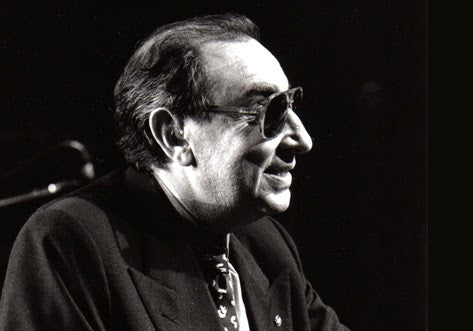\n\nThe Catalan pianist **Tete Montoliu** was born in 1933 in Barcelona. He came from a musical family that had Don Byas as a housemate in the family home. Blind since birth, he learned to read Braille music.\n\nInfluenced by Art Tatum and Duke Ellington, he came out of the conservatory and started touring with Lionel Hampton in '55 and proceeded to become one of the top jazz players in Europe, eventually gaining a solid reputation internationally. He cut a lot of solo records, sometimes played with vocalists or in duo format (with saxophonist George Coleman, for example) but often could be found in the trio format. Reputedly, a '67 live date in NYC with Elvin Jones & Richard Davis was slated for release on Impulse! but has not seen the light of day.\n\nHis playing style was brisk and vital, one of Europe's best technicians on jazz piano. He was at home with standards, blues, ballads and Latin material, while also being informed by his Catalan roots. He worked with Kenny Dorham, Roland Kirk, Ben Webster, Archie Shepp, Anthony Braxton (_In The Tradition_), Eddie Harris, Dexter Gordon, Charlie Mariano, Tootie Heath and many more visiting American musicians. His chops remained right til the end.\n\nTete playing solo from Music For Perla (Steeplechase, recorded '74):\n\nAnd here he is in a trio with NHØP & Tootie Heath, on a flying rendition of \"Giant Steps\":",
"filePath": "content/posts/tete-montoliu-march-28-1933-aug-24-1997.md",
"digest": "6df0788277345b22",
"rendered": {
"html": "<p><img src=\"/images/Tete_Montoliu_large.jpg\" alt=\"\"></p>\n<p>The Catalan pianist <strong>Tete Montoliu</strong> was born in 1933 in Barcelona. He came from a musical family that had Don Byas as a housemate in the family home. Blind since birth, he learned to read Braille music.</p>\n<p>Influenced by Art Tatum and Duke Ellington, he came out of the conservatory and started touring with Lionel Hampton in ‘55 and proceeded to become one of the top jazz players in Europe, eventually gaining a solid reputation internationally. He cut a lot of solo records, sometimes played with vocalists or in duo format (with saxophonist George Coleman, for example) but often could be found in the trio format. Reputedly, a ‘67 live date in NYC with Elvin Jones & Richard Davis was slated for release on Impulse! but has not seen the light of day.</p>\n<p>His playing style was brisk and vital, one of Europe’s best technicians on jazz piano. He was at home with standards, blues, ballads and Latin material, while also being informed by his Catalan roots. He worked with Kenny Dorham, Roland Kirk, Ben Webster, Archie Shepp, Anthony Braxton (<em>In The Tradition</em>), Eddie Harris, Dexter Gordon, Charlie Mariano, Tootie Heath and many more visiting American musicians. His chops remained right til the end.</p>\n<p>Tete playing solo from Music For Perla (Steeplechase, recorded ‘74):</p>\n<p>And here he is in a trio with NHØP & Tootie Heath, on a flying rendition of “Giant Steps”:</p>",
"metadata": {
"headings": [],
"localImagePaths": [],
"remoteImagePaths": [],
"frontmatter": {
"web-scraper-order": "1746561398-206",
"web-scraper-start-url": "https://peaceandrhythm.com",
"title": "Tete Montoliu / March 28, 1933 - Aug 24, 1997",
"pagination": "https://www.peaceandrhythm.com/?page=71",
"date": "March 28, 2017",
"post": "Tete Montoliu / March 28, 1933 - Aug 24, 1997",
"post-href": "https://www.peaceandrhythm.com/blogs/news/tete-montoliu-march-28-1933-aug-24-1997",
"slug": "tete-montoliu-march-28-1933-aug-24-1997"
},
"imagePaths": []
}
},
"collection": "blog"
},
{
"id": "ben-webster-march-27-1909-sept-20-1973",
"data": {
"title": "Ben Webster / March 27, 1909 - Sept 20, 1973",
"slug": "ben-webster-march-27-1909-sept-20-1973",
"date": "2017-03-27T00:00:00.000Z"
},
"body": "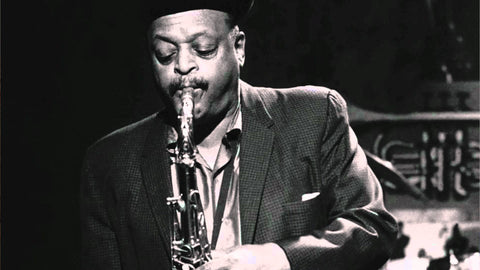\n\nThe great tenor saxophonist **Ben Webster** was one of the best and most influential of the old-school swing saxophonists, whether jumping or sweet. Coming out of Kansas City, he got some early pro experience with Budd Johnson (Lester Young was in the band), Benny Moten, Fletcher Henderson, Andy Kirk, Benny Carter and Cab Calloway before earning a chair in the Duke Ellington band starting around '35. Webster credits one of his bandmates with the Duke, Johnny Hodges, as being a major influence on him.\n\nAfter a fight with Duke, he was given his walking papers in '43, and formed his own band, as well as working with Jay McShann, Raymond Scott and others. In '53 he linked up with pianist Oscar Peterson and Verve Records' founder Norman Granz for a fruitful stretch through the rest of the decade. He teamed with Coleman Hawkins in '57 for the classic _Coleman Hawkins Encounters Ben Webster_ LP and then was working with Gerry Mulligan and backing Jimmy Witherspoon.\n\nFrom '65 on he was living and playing in Europe, even reaching a status of much-celebrated musical hero of Denmark. He can also be heard on recordings with Dizzy, Lionel Hampton, Billie Holiday, Basie, Oliver Nelson and many more. As well, he was an able pianist and has recorded on the instrument.\n\nTwo legends together:",
"filePath": "content/posts/ben-webster-march-27-1909-sept-20-1973.md",
"digest": "7cbc83b69f3b643e",
"rendered": {
"html": "<p><img src=\"/images/maxresdefault_56558975-f4b3-41e4-8ece-a62fb8b2f2e8_large.jpg\" alt=\"\"></p>\n<p>The great tenor saxophonist <strong>Ben Webster</strong> was one of the best and most influential of the old-school swing saxophonists, whether jumping or sweet. Coming out of Kansas City, he got some early pro experience with Budd Johnson (Lester Young was in the band), Benny Moten, Fletcher Henderson, Andy Kirk, Benny Carter and Cab Calloway before earning a chair in the Duke Ellington band starting around ‘35. Webster credits one of his bandmates with the Duke, Johnny Hodges, as being a major influence on him.</p>\n<p>After a fight with Duke, he was given his walking papers in ‘43, and formed his own band, as well as working with Jay McShann, Raymond Scott and others. In ‘53 he linked up with pianist Oscar Peterson and Verve Records’ founder Norman Granz for a fruitful stretch through the rest of the decade. He teamed with Coleman Hawkins in ‘57 for the classic <em>Coleman Hawkins Encounters Ben Webster</em> LP and then was working with Gerry Mulligan and backing Jimmy Witherspoon.</p>\n<p>From ‘65 on he was living and playing in Europe, even reaching a status of much-celebrated musical hero of Denmark. He can also be heard on recordings with Dizzy, Lionel Hampton, Billie Holiday, Basie, Oliver Nelson and many more. As well, he was an able pianist and has recorded on the instrument.</p>\n<p>Two legends together:</p>",
"metadata": {
"headings": [],
"localImagePaths": [],
"remoteImagePaths": [],
"frontmatter": {
"web-scraper-order": "1746561394-204",
"web-scraper-start-url": "https://peaceandrhythm.com",
"title": "Ben Webster / March 27, 1909 - Sept 20, 1973",
"pagination": "https://www.peaceandrhythm.com/?page=71",
"date": "March 27, 2017",
"post": "Ben Webster / March 27, 1909 - Sept 20, 1973",
"post-href": "https://www.peaceandrhythm.com/blogs/news/ben-webster-march-27-1909-sept-20-1973",
"slug": "ben-webster-march-27-1909-sept-20-1973"
},
"imagePaths": []
}
},
"collection": "blog"
},
{
"id": "jose-chombo-silva-march-27-1913-1995",
"data": {
"title": "Jose \"Chombo\" Silva / March 27, 1913 - ?/1995",
"slug": "jose-chombo-silva-march-27-1913-1995",
"date": "2017-03-27T00:00:00.000Z"
},
"body": "**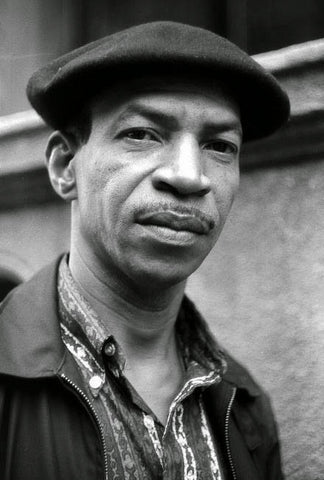**\n\n**Jose \"Chombo\" Silva** was a veteran Cuban musician who hit the NYC scene in the '60s, playing charangas and descargas. Versatile as both a saxophonist and violinist, he played with Johnny Pacheco's charanga, Ray Barretto, the Alegre All Stars, Kako, Mongo Santamaría, Peruchín, Charlie Palmieri, Chocolate Armenteros, Típica Ideal, Africando, Nestor Torres' La Sensual and the Panamanian group Los Exagerados, with whom he contributed the blasting descarga \"Panama Esta Bueno Y... Ma\". \n\nHe learned violin at an early age, playing in church groups. In the late '30s he was playing with pianist Peruchín. In '48 he started the Swing Boys orchestra in Havana and was chumming with Chico O'Farrill. In '49 he was off to Europe to play in the Jaime Camino orchestra and jammed with young Tete Montoliu. \n\nHe traveled around South America and Panama in the '50s before joining Beny Moré's band as a sax player in '55. The heavy _descarga_ scene was jamming in the late '50s, with Chombo a major factor. After moving to the States, he hooked up with Machito and Cal Tjader. He found solid work with Barretto, Mongo and for producer Al Santiago and the Alegre label.\n\nA talent known to the hardcore Latin music freaks, he contributed to several cult classic recordings but he may have only made one album under his own leadership, the tribute to Armando Manzanero titled _Los Hits de Manzanero - En el Saxofon de Chombo Silva_ , for the Gema label ('69). At least as far as I know, it's been just that one. You can check him on the raw descargas of Julio Guitierrez' _Cuban Jam Sessions_ (Panart) AND the later _Progressive Latin_ , the frenzied salsa of La Diferente, Cal Tjader's _A Night at the Blackhawk_ , _Loco Motion_ by Joe Loco, _Knockdown Calypsos_ by the calypsonian Growling Tiger and several others ya gotta dig for. \n\n\nHere he is featured with the Panamanian ensemble Los Exagerados:\n\nHe appears on the fantastic _Progressive Latin_ by Julio Gutiérrez:\n\nPart of this fantastic Cal Tjader line-up of the late '50s:\n\nPretty sure he's on this rager as well:\n\nAnd a nice contribution to this oldie:\n\nHe's playing violin on this calypso album:\n\nAnd a later showing, blowing a ballad with Paquito's band:",
"filePath": "content/posts/jose-chombo-silva-march-27-1913-1995.md",
"digest": "2ea8bf1533a358cf",
"rendered": {
"html": "<p><strong><img src=\"/images/A-358035-1481067808-5245_jpeg_large.jpg\" alt=\"\"></strong></p>\n<p><strong>Jose “Chombo” Silva</strong> was a veteran Cuban musician who hit the NYC scene in the ’60s, playing charangas and descargas. Versatile as both a saxophonist and violinist, he played with Johnny Pacheco’s charanga, Ray Barretto, the Alegre All Stars, Kako, Mongo Santamaría, Peruchín, Charlie Palmieri, Chocolate Armenteros, Típica Ideal, Africando, Nestor Torres’ La Sensual and the Panamanian group Los Exagerados, with whom he contributed the blasting descarga “Panama Esta Bueno Y… Ma”.</p>\n<p>He learned violin at an early age, playing in church groups. In the late ’30s he was playing with pianist Peruchín. In ‘48 he started the Swing Boys orchestra in Havana and was chumming with Chico O’Farrill. In ‘49 he was off to Europe to play in the Jaime Camino orchestra and jammed with young Tete Montoliu.</p>\n<p>He traveled around South America and Panama in the ’50s before joining Beny Moré’s band as a sax player in ‘55. The heavy <em>descarga</em> scene was jamming in the late ’50s, with Chombo a major factor. After moving to the States, he hooked up with Machito and Cal Tjader. He found solid work with Barretto, Mongo and for producer Al Santiago and the Alegre label.</p>\n<p>A talent known to the hardcore Latin music freaks, he contributed to several cult classic recordings but he may have only made one album under his own leadership, the tribute to Armando Manzanero titled <em>Los Hits de Manzanero - En el Saxofon de Chombo Silva</em> , for the Gema label (‘69). At least as far as I know, it’s been just that one. You can check him on the raw descargas of Julio Guitierrez’ <em>Cuban Jam Sessions</em> (Panart) AND the later <em>Progressive Latin</em> , the frenzied salsa of La Diferente, Cal Tjader’s <em>A Night at the Blackhawk</em> , <em>Loco Motion</em> by Joe Loco, <em>Knockdown Calypsos</em> by the calypsonian Growling Tiger and several others ya gotta dig for.</p>\n<p>Here he is featured with the Panamanian ensemble Los Exagerados:</p>\n<p>He appears on the fantastic <em>Progressive Latin</em> by Julio Gutiérrez:</p>\n<p>Part of this fantastic Cal Tjader line-up of the late ’50s:</p>\n<p>Pretty sure he’s on this rager as well:</p>\n<p>And a nice contribution to this oldie:</p>\n<p>He’s playing violin on this calypso album:</p>\n<p>And a later showing, blowing a ballad with Paquito’s band:</p>",
"metadata": {
"headings": [],
"localImagePaths": [],
"remoteImagePaths": [],
"frontmatter": {
"web-scraper-order": "1746561392-203",
"web-scraper-start-url": "https://peaceandrhythm.com",
"title": "Jose \"Chombo\" Silva / March 27, 1913 - ?/1995",
"pagination": "https://www.peaceandrhythm.com/?page=72",
"date": "March 27, 2017",
"post": "Jose \"Chombo\" Silva / March 27, 1913 - ?/1995",
"post-href": "https://www.peaceandrhythm.com/blogs/news/jose-chombo-silva-march-27-1913-1995",
"slug": "jose-chombo-silva-march-27-1913-1995"
},
"imagePaths": []
}
},
"collection": "blog"
},
{
"id": "sarah-vaughan-march-27-1924-april-3-1990",
"data": {
"title": "Sarah Vaughan / March 27, 1924 - April 3, 1990",
"slug": "sarah-vaughan-march-27-1924-april-3-1990",
"date": "2017-03-27T00:00:00.000Z"
},
"body": "\n\nOne of the great jazz singers, Sassie **Sarah Vaughan** got her start in her hometown of Newark NJ, playing piano and singing in nightclubs from age 15. She won an engagement at the Apollo after singing \"Body & Soul\" in a contest at 18.\n\nShe toured the U.S. in '43 with the great band of Earl \"Fatha\" Hines, featuring Charlie Parker, Dizzy Gillespie, Fats Navarro, Billy Eckstine, JJ Johnson and others. After some of the stars mutinied and left Hines to start a new band, Vaughn jumped in too. Others that entered that band include Miles Davis, Art Blakey, Kenny Dorham, Gene Ammons, Dexter Gordon and more. Her first recording came in '44, with Eckstine, before setting off as her own boss.\n\nTrumpeter George Treadwell (her first husband) significantly aided in her career upswing, with his management and musical direction. Partially due to not receiving royalty checks from her labels, she signed on to a major to record a bunch of pop ballads with Columbia from '48-53. She got to work with a symphony orchestra for the first time in '49 and made some TV appearances as early as 1953.\n\nShe was always dissatisfied with the pop material at Columbia so when she signed with Mercury she was allowed to do both pop and jazz. She became quite popular in the '50s, with both fans and critics. She did an album with Clifford Brown in '54. That year she also played Carnegie Hall and toured Europe for the first time. She cut some sides with Roulette Records, working with the likes of Count Basie and Quincy Jones.\n\nShady business dealings led to a down period in the later '60s but she came back with some strong records with the Mainstream label in the early '70s before her focused involvement with symphonies. She worked until her passing in 1990. Working with pop, jazz, swing, symphonic or Brazilian material, she had one of the great voices. It remained strong and wide-ranging right til the end.",
"filePath": "content/posts/sarah-vaughan-march-27-1924-april-3-1990.md",
"digest": "c7ed8ce2e4d52cfa",
"rendered": {
"html": "<p><img src=\"/images/vaughansarahjuanlespins1963b-c-riccardoschwamenthal_ctsimages-c617d890da740852027f9bbf07f102af55e73b33-s1200_large.jpg\" alt=\"\"></p>\n<p>One of the great jazz singers, Sassie <strong>Sarah Vaughan</strong> got her start in her hometown of Newark NJ, playing piano and singing in nightclubs from age 15. She won an engagement at the Apollo after singing “Body & Soul” in a contest at 18.</p>\n<p>She toured the U.S. in ‘43 with the great band of Earl “Fatha” Hines, featuring Charlie Parker, Dizzy Gillespie, Fats Navarro, Billy Eckstine, JJ Johnson and others. After some of the stars mutinied and left Hines to start a new band, Vaughn jumped in too. Others that entered that band include Miles Davis, Art Blakey, Kenny Dorham, Gene Ammons, Dexter Gordon and more. Her first recording came in ‘44, with Eckstine, before setting off as her own boss.</p>\n<p>Trumpeter George Treadwell (her first husband) significantly aided in her career upswing, with his management and musical direction. Partially due to not receiving royalty checks from her labels, she signed on to a major to record a bunch of pop ballads with Columbia from ‘48-53. She got to work with a symphony orchestra for the first time in ‘49 and made some TV appearances as early as 1953.</p>\n<p>She was always dissatisfied with the pop material at Columbia so when she signed with Mercury she was allowed to do both pop and jazz. She became quite popular in the ’50s, with both fans and critics. She did an album with Clifford Brown in ‘54. That year she also played Carnegie Hall and toured Europe for the first time. She cut some sides with Roulette Records, working with the likes of Count Basie and Quincy Jones.</p>\n<p>Shady business dealings led to a down period in the later ’60s but she came back with some strong records with the Mainstream label in the early ’70s before her focused involvement with symphonies. She worked until her passing in 1990. Working with pop, jazz, swing, symphonic or Brazilian material, she had one of the great voices. It remained strong and wide-ranging right til the end.</p>",
"metadata": {
"headings": [],
"localImagePaths": [],
"remoteImagePaths": [],
"frontmatter": {
"web-scraper-order": "1746561396-205",
"web-scraper-start-url": "https://peaceandrhythm.com",
"title": "Sarah Vaughan / March 27, 1924 - April 3, 1990",
"pagination": "https://www.peaceandrhythm.com/?page=71",
"date": "March 27, 2017",
"post": "Sarah Vaughan / March 27, 1924 - April 3, 1990",
"post-href": "https://www.peaceandrhythm.com/blogs/news/sarah-vaughan-march-27-1924-april-3-1990",
"slug": "sarah-vaughan-march-27-1924-april-3-1990"
},
"imagePaths": []
}
},
"collection": "blog"
},
{
"id": "charles-stepney-march-26-1931-may-17-1976",
"data": {
"title": "Charles Stepney / March 26, 1931 - May 17, 1976",
"slug": "charles-stepney-march-26-1931-may-17-1976",
"date": "2017-03-26T00:00:00.000Z"
},
"body": "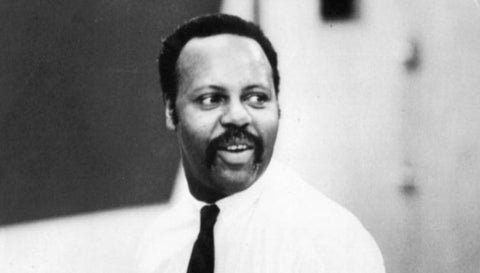\n\nA fine vibraphonist (and pianist) and a visionary producer, conductor and arranger, **Charles Stepney** was the psychedelic soul man over at Chess Records and their subsidiary Cadet Concept. Producer of classics by Ramsey Lewis, Minnie Ripperton, _The Howlin' Wolf Album_ , Muddy Waters (_Electric Mud_), Terry Callier, Marlena Shaw, The Dells, The Emotions, Phil Upchurch and more, he was co-founder of Rotary Connection and Earth, Wind & Fire (although due to his contract with Chess could not always be listed in the credits).\n\nAs a sideman he performed on many Chess songs, as well as played on albums by Eddie Harris, Ramsey Lewis, Johnny Pate and others. He also conducted an orchestral jazz/soul concert with the Minneapolis Symphony Orchestra. At the time of his early death in '76 he was planning to work with Michael Jackson and had just co-founded Kalimba Productions with Maurice White.\n\nHe was a mentor to many and a Chicago legend, and his orchestral soul set the template for artfully crafted jazz-pop. Not only do Stevie Wonder and Elton John claim Stepney as a huge influence, but you can also hear it in the work of CTI Records.\n\nLet's check out a few Stepney productions, beginning with this magical Terry Callier track:\n\nHere's the sublime \"Les Fleur\", co-composed, produced and arranged by Stepney, recorded by Minnie Riperton, who sings from the point of view of a flower in the song intro (\"will some lady pin me in her hair...will a child find me by a stream...\"):\n\n Stepney co-produced and arranged this classic:\n\nMuddy psych:\n\nWolf psych:\n\nAnd one of my favorite tunes, by the Stepney master project Rotary Connection:\n\nHere is a short doc about Charles:",
"filePath": "content/posts/charles-stepney-march-26-1931-may-17-1976.md",
"digest": "3677d56b57d30cca",
"rendered": {
"html": "<p><img src=\"/images/Charles-Stepney1-704x400_large.jpg\" alt=\"\"></p>\n<p>A fine vibraphonist (and pianist) and a visionary producer, conductor and arranger, <strong>Charles Stepney</strong> was the psychedelic soul man over at Chess Records and their subsidiary Cadet Concept. Producer of classics by Ramsey Lewis, Minnie Ripperton, <em>The Howlin’ Wolf Album</em> , Muddy Waters (<em>Electric Mud</em>), Terry Callier, Marlena Shaw, The Dells, The Emotions, Phil Upchurch and more, he was co-founder of Rotary Connection and Earth, Wind & Fire (although due to his contract with Chess could not always be listed in the credits).</p>\n<p>As a sideman he performed on many Chess songs, as well as played on albums by Eddie Harris, Ramsey Lewis, Johnny Pate and others. He also conducted an orchestral jazz/soul concert with the Minneapolis Symphony Orchestra. At the time of his early death in ‘76 he was planning to work with Michael Jackson and had just co-founded Kalimba Productions with Maurice White.</p>\n<p>He was a mentor to many and a Chicago legend, and his orchestral soul set the template for artfully crafted jazz-pop. Not only do Stevie Wonder and Elton John claim Stepney as a huge influence, but you can also hear it in the work of CTI Records.</p>\n<p>Let’s check out a few Stepney productions, beginning with this magical Terry Callier track:</p>\n<p>Here’s the sublime “Les Fleur”, co-composed, produced and arranged by Stepney, recorded by Minnie Riperton, who sings from the point of view of a flower in the song intro (“will some lady pin me in her hair…will a child find me by a stream…”):</p>\n<p>Stepney co-produced and arranged this classic:</p>\n<p>Muddy psych:</p>\n<p>Wolf psych:</p>\n<p>And one of my favorite tunes, by the Stepney master project Rotary Connection:</p>\n<p>Here is a short doc about Charles:</p>",
"metadata": {
"headings": [],
"localImagePaths": [],
"remoteImagePaths": [],
"frontmatter": {
"web-scraper-order": "1746561381-199",
"web-scraper-start-url": "https://peaceandrhythm.com",
"title": "Charles Stepney / March 26, 1931 - May 17, 1976",
"pagination": "https://www.peaceandrhythm.com/?page=72",
"date": "March 26, 2017",
"post": "Charles Stepney / March 26, 1931 - May 17, 1976",
"post-href": "https://www.peaceandrhythm.com/blogs/news/charles-stepney-march-26-1931-may-17-1976",
"slug": "charles-stepney-march-26-1931-may-17-1976"
},
"imagePaths": []
}
},
"collection": "blog"
},
{
"id": "rufus-thomas-march-26-1917-dec-15-2001",
"data": {
"title": "Rufus Thomas / March 26, 1917 - Dec 15, 2001",
"slug": "rufus-thomas-march-26-1917-dec-15-2001",
"date": "2017-03-26T00:00:00.000Z"
},
"body": "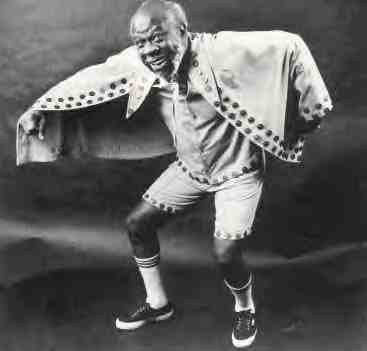\n\nThe crown prince of dance, the comically inspirational and legendarily entertaining R&B showman **Rufus Thomas** was born on this day in 1917. A singer, dancer, radio DJ, comedian and father figure in a musical family, Thomas charmed everyone with his songs, dances and personality.\n\nA Memphis native, he worked with a minstrel show in the '30s and started performing on the city's nightclub scene in the '40s. He cut his first record in '41. He became a popular radio DJ on the black owned radio station WDIA and hosted talent shows on Beale St. His first big hit (\"Bear Cat\", an answer record to Big Mama Thornton's \"Hound Dog\") came in '53 for the upstart Sun Records. He also recorded for Chess in the '50s, while continuing holding a longtime day job at a bleaching plant.\n\nHe joined the fledgling Stax/Satellite family in '59 and achieved success in duets with his daughter Carla Thomas. \"Walking The Dog\" was a Rufus solo hit in '63, later covered by the Rolling Stones. His early '70s work for Stax stands to some as his best and possibly his longest lasting, thanks to hiphop samples and funky production. Witness him tearing it up at _WattStax,_ where his performance was a highlight.\n\nAs Stax folded in '75, he became less visible and his recording slowed. He did continue his radio career, playing blues and R&B for Memphis stations. He did some touring as \"the world's oldest teenager\". He had a bit part in the Jim Jarmusch's '89 film _Mystery Train_. He also appeared in flicks by Robert Altman and D.A. Pennebaker. Several of his children also had/have notable music careers.",
"filePath": "content/posts/rufus-thomas-march-26-1917-dec-15-2001.md",
"digest": "ac901446187e9474",
"rendered": {
"html": "<p><img src=\"/images/b8252a1a8c3e4e41890a521bf20f4105_large.jpg\" alt=\"\"></p>\n<p>The crown prince of dance, the comically inspirational and legendarily entertaining R&B showman <strong>Rufus Thomas</strong> was born on this day in 1917. A singer, dancer, radio DJ, comedian and father figure in a musical family, Thomas charmed everyone with his songs, dances and personality.</p>\n<p>A Memphis native, he worked with a minstrel show in the ’30s and started performing on the city’s nightclub scene in the ’40s. He cut his first record in ‘41. He became a popular radio DJ on the black owned radio station WDIA and hosted talent shows on Beale St. His first big hit (“Bear Cat”, an answer record to Big Mama Thornton’s “Hound Dog”) came in ‘53 for the upstart Sun Records. He also recorded for Chess in the ’50s, while continuing holding a longtime day job at a bleaching plant.</p>\n<p>He joined the fledgling Stax/Satellite family in ‘59 and achieved success in duets with his daughter Carla Thomas. “Walking The Dog” was a Rufus solo hit in ‘63, later covered by the Rolling Stones. His early ’70s work for Stax stands to some as his best and possibly his longest lasting, thanks to hiphop samples and funky production. Witness him tearing it up at <em>WattStax,</em> where his performance was a highlight.</p>\n<p>As Stax folded in ‘75, he became less visible and his recording slowed. He did continue his radio career, playing blues and R&B for Memphis stations. He did some touring as “the world’s oldest teenager”. He had a bit part in the Jim Jarmusch’s ‘89 film <em>Mystery Train</em>. He also appeared in flicks by Robert Altman and D.A. Pennebaker. Several of his children also had/have notable music careers.</p>",
"metadata": {
"headings": [],
"localImagePaths": [],
"remoteImagePaths": [],
"frontmatter": {
"web-scraper-order": "1746561386-201",
"web-scraper-start-url": "https://peaceandrhythm.com",
"title": "Rufus Thomas / March 26, 1917 - Dec 15, 2001",
"pagination": "https://www.peaceandrhythm.com/?page=72",
"date": "March 26, 2017",
"post": "Rufus Thomas / March 26, 1917 - Dec 15, 2001",
"post-href": "https://www.peaceandrhythm.com/blogs/news/rufus-thomas-march-26-1917-dec-15-2001",
"slug": "rufus-thomas-march-26-1917-dec-15-2001"
},
"imagePaths": []
}
},
"collection": "blog"
},
{
"id": "runnin-for-the-ghost-out-april-7",
"data": {
"title": "Runnin' For The Ghost, Out April 7!!",
"slug": "runnin-for-the-ghost-out-april-7",
"date": "2017-03-26T00:00:00.000Z"
},
"body": "\n\nApril 7 will see the release of the **brand new album** by one of your favorite funky ensembles, **Big Mean Sound Machine**. The East coast band's fourth full length album, **_Runnin' For The Ghost_** , is co-released by **Peace & Rhythm** (USA) and **Blank Slate Records** (Germany).\n\nIn a time when people need to come together more than ever, Big Mean Sound Machine is spreading positivity through communal dance by creating music that moves people of all ages and backgrounds. With this new album, the ten piece band breaks new sonic ground and creates a unique flavor of instrumental music with their fourth full-length studio album, _Runnin’ for the Ghost_. \n \nWhile on tour, Big Mean opened a new chapter when the band had the honor of meeting and playing with master drummer **Tony Allen** (pioneer and co-creator of afrobeat with Fela Kuti and the Africa 70). His dream of seeing afrobeat music spread globally to become bigger than any one person or any one group motivated Big Mean to carry the torch of original dance music into the 21st century. Though traditional afrobeat has had a major influence on Big Mean Sound Machine, the music on _Runnin’ for the Ghost_ reaches far beyond tradition and pushes the band’s sound in new ways through the mixing and blending of many genres, keeping with the spirit that inspired Allen and Kuti to create their own style in the first place. \n \nOn _Runnin’ for the Ghost_ , Big Mean continues to harness their collective creativity as the majority of the conception, arrangement and production came from within the band. Bassist and band leader **Angelo Peters** led the charge in producing the new record while recruiting **Matt Saccuccimorano** (of Big Mean's previous release _Contraband_) to engineer the first live studio session. Later, Peters engineered and mixed the rest of the album at **Big Mean Studios** with additional recording and production from bandmates **Dan Barker** , **Andrew Klein** and **Lucas Ashby**. Big Mean’s synth wizard **Dana Billings** added the final touches in mastering the album, completing the process. \n \nTo push forward into new creative territory, while recording _Runnin’ for the Ghost_ the band tried a different approach than usual by learning, arranging and recording certain tracks in a single day, crafting the music spontaneously in the studio. This new collaborative approach shines through on the standout track “Van Chatter.” The song delves into the realm of West African highlife and Central African soukous with articulate and fast moving guitar sounds alongside a call and response horn melody, creating a lively conversation between tradition and innovation. \n \nAnother highlight is the lead single, “Seeing The Bigger Picture,” which incorporates Afro-Cuban percussion patterns and a driving, melodic bass groove that support an uplifting horn melody and a swirling analog synthesizer solo. Each band member’s unique musical voice serves as a thread in a seamlessly intertwined fabric of sound, creating an anthem for Big Mean’s mission to move people.\n\n**Album artwork by Pierce Marratto**\n\n \n\n**Listen to the lead single, \"Seeing The Bigger Picture\" right here:**\n\n****\n\n \nTrack List: \n \n● Return of the March \n \n● Seeing The Bigger Picture \n \n● Van Chatter \n \n● Runnin’ for the Ghost \n \n● Hired Gun \n \n● Kang's Lament \n \n● Burning Van \n \n● Sahara Cell Phones \n \n● Another Grain of Sand \n \n[www.bigmeansoundmachine.com](https://peace-rhythm.myshopify.com/admin/products/www.bigmeansoundmachine.com)\n\n<http://www.blankslaterecords.com/>\n\n",
"filePath": "content/posts/runnin-for-the-ghost-out-april-7.md",
"digest": "42e14a79aa9875da",
"rendered": {
"html": "<p><img src=\"//cdn.shopify.com/s/files/1/1521/8838/products/15338681_10154229091980735_8715355290860656236_n_large.jpg?v=1490570676\" alt=\"\"></p>\n<p>April 7 will see the release of the <strong>brand new album</strong> by one of your favorite funky ensembles, <strong>Big Mean Sound Machine</strong>. The East coast band’s fourth full length album, <strong><em>Runnin’ For The Ghost</em></strong> , is co-released by <strong>Peace & Rhythm</strong> (USA) and <strong>Blank Slate Records</strong> (Germany).</p>\n<p>In a time when people need to come together more than ever, Big Mean Sound Machine is spreading positivity through communal dance by creating music that moves people of all ages and backgrounds. With this new album, the ten piece band breaks new sonic ground and creates a unique flavor of instrumental music with their fourth full-length studio album, <em>Runnin’ for the Ghost</em>.</p>\n<p>While on tour, Big Mean opened a new chapter when the band had the honor of meeting and playing with master drummer <strong>Tony Allen</strong> (pioneer and co-creator of afrobeat with Fela Kuti and the Africa 70). His dream of seeing afrobeat music spread globally to become bigger than any one person or any one group motivated Big Mean to carry the torch of original dance music into the 21st century. Though traditional afrobeat has had a major influence on Big Mean Sound Machine, the music on <em>Runnin’ for the Ghost</em> reaches far beyond tradition and pushes the band’s sound in new ways through the mixing and blending of many genres, keeping with the spirit that inspired Allen and Kuti to create their own style in the first place.</p>\n<p>On <em>Runnin’ for the Ghost</em> , Big Mean continues to harness their collective creativity as the majority of the conception, arrangement and production came from within the band. Bassist and band leader <strong>Angelo Peters</strong> led the charge in producing the new record while recruiting <strong>Matt Saccuccimorano</strong> (of Big Mean’s previous release <em>Contraband</em>) to engineer the first live studio session. Later, Peters engineered and mixed the rest of the album at <strong>Big Mean Studios</strong> with additional recording and production from bandmates <strong>Dan Barker</strong> , <strong>Andrew Klein</strong> and <strong>Lucas Ashby</strong>. Big Mean’s synth wizard <strong>Dana Billings</strong> added the final touches in mastering the album, completing the process.</p>\n<p>To push forward into new creative territory, while recording <em>Runnin’ for the Ghost</em> the band tried a different approach than usual by learning, arranging and recording certain tracks in a single day, crafting the music spontaneously in the studio. This new collaborative approach shines through on the standout track “Van Chatter.” The song delves into the realm of West African highlife and Central African soukous with articulate and fast moving guitar sounds alongside a call and response horn melody, creating a lively conversation between tradition and innovation.</p>\n<p>Another highlight is the lead single, “Seeing The Bigger Picture,” which incorporates Afro-Cuban percussion patterns and a driving, melodic bass groove that support an uplifting horn melody and a swirling analog synthesizer solo. Each band member’s unique musical voice serves as a thread in a seamlessly intertwined fabric of sound, creating an anthem for Big Mean’s mission to move people.</p>\n<p><strong>Album artwork by Pierce Marratto</strong></p>\n<p><strong>Listen to the lead single, “Seeing The Bigger Picture” right here:</strong></p>\n<hr>\n<p>Track List:</p>\n<p>● Return of the March</p>\n<p>● Seeing The Bigger Picture</p>\n<p>● Van Chatter</p>\n<p>● Runnin’ for the Ghost</p>\n<p>● Hired Gun</p>\n<p>● Kang’s Lament</p>\n<p>● Burning Van</p>\n<p>● Sahara Cell Phones</p>\n<p>● Another Grain of Sand</p>\n<p><a href=\"https://peace-rhythm.myshopify.com/admin/products/www.bigmeansoundmachine.com\">www.bigmeansoundmachine.com</a></p>\n<p><a href=\"http://www.blankslaterecords.com/\">http://www.blankslaterecords.com/</a></p>\n<p><img src=\"/images/ced68c_b8e8ed59e2224fe09a3a761520f0ea7c_mv2_d_3000_3000_s_4_2_947ebdf7-9d11-45c1-864c-75865f0c6fa9_large.png\" alt=\"\"></p>",
"metadata": {
"headings": [],
"localImagePaths": [],
"remoteImagePaths": [],
"frontmatter": {
"web-scraper-order": "1746561388-202",
"web-scraper-start-url": "https://peaceandrhythm.com",
"title": "Runnin' For The Ghost, Out April 7!!",
"pagination": "https://www.peaceandrhythm.com/?page=72",
"date": "March 26, 2017",
"post": "Runnin' For The Ghost, Out April 7!!",
"post-href": "https://www.peaceandrhythm.com/blogs/news/runnin-for-the-ghost-out-april-7",
"slug": "runnin-for-the-ghost-out-april-7"
},
"imagePaths": []
}
},
"collection": "blog"
},
{
"id": "william-onyeabor-march-26-1946-jan-16-2017",
"data": {
"title": "William Onyeabor / March 26, 1946 - Jan 16, 2017",
"slug": "william-onyeabor-march-26-1946-jan-16-2017",
"date": "2017-03-26T00:00:00.000Z"
},
"body": "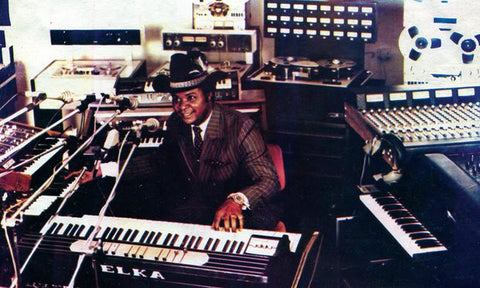\n\nOne of West Africa's (and indeed the planet's) most unique and independent musicians was the Nigerian synth-funk artist **William Onyeabor** , who passed away earlier this year.\n\nBorn in Enugu, southeastern Nigeria, he studied cinematography in Russia and upon returning to Nigeria attempted to produce movies but found better luck when he opened a record pressing plant, recording studio, publishing company and record label.\n\nIn the late '70s and into about 1985, he self-produced several unique, avant-garde records driven by synthesizers, drum machines, sequencers and very funky, groovy psych-disco rhythms. It has been speculated that he acquired all his expensive and hard-to-find (in Africa) gear from being bankrolled by mysterious Russian money.\n\nThe music is certainly his own, an unintentionally(?) psychedelic fusion of funk, afrobeat, disco and electro (the African Kraftwerk?). His lyrical themes included anti-war sentiment, love and spirituality. His futuristic style was evident from the banks of keyboards that would surround him on his album covers and the incredible music that would unfold in extended compositions. Interestingly, he never played any concerts. \n\nHe became a born-again Christian and that was it for his commercial music. He shifted to business, gospel music and pastoral life and showed no interest in sharing anything about his past doings. After retiring from commercial music production he became a well-known businessman, including owning a semolina mill and living in a huge mansion.\n\nIn the late '90s/early 2000s, some of his songs started to be placed on compilations during a (still-flowing) wave of African reissues, anthologies and comps. Thanks to the work of Luaka Bop, Strut Records and others, his tunes started to be heard before becoming an outright phenomenon.\n\nIn recent years his life and music have become the subject of intense speculation, fascination and several tributes, remixes and [covers](https://www.youtube.com/watch?v=pRO7SeJotL4) appeared celebrating this one-of-kind artist. A full star-studded tribute band was formed, all of his albums have been reissued and Moog produced two Onyeabor-inspired synths. Luaka Bop issued the _Who Is William Onyeabor?_ , official authorized anthology in 2013 and Onyeabor himself announced that he had new music coming right before he passed in January of this year.\n\nCheck out this _Vice_ -produced documentary about this mysterious funk god:",
"filePath": "content/posts/william-onyeabor-march-26-1946-jan-16-2017.md",
"digest": "6f04152b1d790464",
"rendered": {
"html": "<p><img src=\"/images/3403_large.jpg\" alt=\"\"></p>\n<p>One of West Africa’s (and indeed the planet’s) most unique and independent musicians was the Nigerian synth-funk artist <strong>William Onyeabor</strong> , who passed away earlier this year.</p>\n<p>Born in Enugu, southeastern Nigeria, he studied cinematography in Russia and upon returning to Nigeria attempted to produce movies but found better luck when he opened a record pressing plant, recording studio, publishing company and record label.</p>\n<p>In the late ’70s and into about 1985, he self-produced several unique, avant-garde records driven by synthesizers, drum machines, sequencers and very funky, groovy psych-disco rhythms. It has been speculated that he acquired all his expensive and hard-to-find (in Africa) gear from being bankrolled by mysterious Russian money.</p>\n<p>The music is certainly his own, an unintentionally(?) psychedelic fusion of funk, afrobeat, disco and electro (the African Kraftwerk?). His lyrical themes included anti-war sentiment, love and spirituality. His futuristic style was evident from the banks of keyboards that would surround him on his album covers and the incredible music that would unfold in extended compositions. Interestingly, he never played any concerts.</p>\n<p>He became a born-again Christian and that was it for his commercial music. He shifted to business, gospel music and pastoral life and showed no interest in sharing anything about his past doings. After retiring from commercial music production he became a well-known businessman, including owning a semolina mill and living in a huge mansion.</p>\n<p>In the late ’90s/early 2000s, some of his songs started to be placed on compilations during a (still-flowing) wave of African reissues, anthologies and comps. Thanks to the work of Luaka Bop, Strut Records and others, his tunes started to be heard before becoming an outright phenomenon.</p>\n<p>In recent years his life and music have become the subject of intense speculation, fascination and several tributes, remixes and <a href=\"https://www.youtube.com/watch?v=pRO7SeJotL4\">covers</a> appeared celebrating this one-of-kind artist. A full star-studded tribute band was formed, all of his albums have been reissued and Moog produced two Onyeabor-inspired synths. Luaka Bop issued the <em>Who Is William Onyeabor?</em> , official authorized anthology in 2013 and Onyeabor himself announced that he had new music coming right before he passed in January of this year.</p>\n<p>Check out this <em>Vice</em> -produced documentary about this mysterious funk god:</p>",
"metadata": {
"headings": [],
"localImagePaths": [],
"remoteImagePaths": [],
"frontmatter": {
"web-scraper-order": "1746561383-200",
"web-scraper-start-url": "https://peaceandrhythm.com",
"title": "William Onyeabor / March 26, 1946 - Jan 16, 2017",
"pagination": "https://www.peaceandrhythm.com/?page=72",
"date": "March 26, 2017",
"post": "William Onyeabor / March 26, 1946 - Jan 16, 2017",
"post-href": "https://www.peaceandrhythm.com/blogs/news/william-onyeabor-march-26-1946-jan-16-2017",
"slug": "william-onyeabor-march-26-1946-jan-16-2017"
},
"imagePaths": []
}
},
"collection": "blog"
}
]
Noah Howard / April 6, 1943 - Sept 3, 2010
April 6, 2017
** Noah Howard was underknown as a sax player to many, yet was a vital figure in the landscape of out-jazz, recording albums for ESP-Disk, America, Freedom, CIMP, Free Music Productions, Ayler Recordings and his own AltSax imprint, among others. Born in New Orleans, he was deeply inspired by John...
Joe Meek / April 5, 1929 - Feb 3, 1967
April 5, 2017
** Joe Meek may very well be rock's first independent producer/auteur. He is like an early rock & roll Lee Perry, a man with a strong artistic inclination and a home studio, eccentric tendencies and behaviors, and experimental processes to create otherwordly results. He had a background as an electrician...
"Chocolate" Armenteros / April 4, 1928 - Jan 6, 2016
April 4, 2017
** Alfredo "Chocolate" Armenteros is my favorite of the great Cuban trumpeters. He had a powerhouse sound that could be brash and forceful, or sweet and lyrical. He got his professional start while still in Cuba, cutting his first sides in '49 with René Álvarez. The '50s saw him busy...
Muddy Waters / April 4, 1913(?) - April 30, 1983
April 4, 2017
McKinley Morganfield's name was awesome enough but he had to go and start being called Muddy Waters , which is like the old bluesman equivilent of a punk rock name. But that is an appropriate analogy since his loud & electrified folk-blues was the punk of its generation. Without Muddy,...
Jimmy Nolen / April 3, 1934 - Dec 18, 1983
April 3, 2017
Here's a birthday shout to Jimmy "Chank" Nolen , the "chicken scratch" guitar player with the James Brown band, and a crucial part of his sound. He came from Oklahoma City, first playing the violin before switching to guitar, inspired by T Bone Walker. He then went to Los Angeles...
Scott LaFaro / April 3, 1936 - July 6, 1961
April 3, 2017
Although he only lived to be 25, Scott LaFaro is one of the most advanced and influential jazz bassists the music had ever seen. His playing brought melodicism, exploration, voice and intuitive interplay to a whole new level and subsequently inspired generations of bassists since. Although best known for his...
Marvin Gaye / April 2, 1939 - April 1, 1984
April 2, 2017
Born today, one of the kings of soul music, Marvin Gaye. Is there anyone in the world who doesn't like his music?
D. Boon / April 1, 1958 - Dec 22, 1985
April 1, 2017
Minutemen guitarist & vocalist D. Boon died in a van accident at the far too young age of 27, but is still considered a punk rock icon. The band gained respect as one of the best and most inventive, as well as politically aware (evident in D. Boon's lyrical contributions)...
Gil Scott-Heron / April 1, 1949 - May 27, 2011
April 1, 2017
Today is the birthday of one of my very favorites!! The poet/vocalist/songwriter/novelist Gil Scott-Heron was one of the great lyricists of all time, combining the personal and political, and as a vocalist he would weave his stories into the fantastic soul-jazz tunes he cooked up with Brian Jackson. The music...
Lowell Fulson / March 31, 1921 - March 7, 1999
March 31, 2017
The soulful blues guitarist with Cherokee/Choctaw roots, Lowell Fulson , was as great a representative of West Coast blues as there ever has been. Born in Oklahoma, he hit California in the mid-'40s and formed a band that employed youngsters Ray Charles & Stanley Turrentine. He cut records for Aladdin,...
Sonny Boy Williamson I / March 30, 1914 - June 1, 1948
March 30, 2017
Despite being two years younger than the other Sonny Boy Williamson (II), this one (born John Lee Curtis Williamson in Tennessee) was on the scene in the '30s and '40s before his murder in a robbery after a gig. He was only 34. His early travels came alongside Sleepy John...
Camille Howard / March 29, 1914 - March 10, 1993
March 29, 2017
Blues-boogie piano star Camille Howard was one of the better known female talents of the early R&B and jump-blues years. One of the finest blues piano players of the era, she rocked the Los Angeles scene with her own groups, as well as with her husband Roy Milton's band as...
Tete Montoliu / March 28, 1933 - Aug 24, 1997
March 28, 2017
The Catalan pianist Tete Montoliu was born in 1933 in Barcelona. He came from a musical family that had Don Byas as a housemate in the family home. Blind since birth, he learned to read Braille music. Influenced by Art Tatum and Duke Ellington, he came out of the conservatory...
Ben Webster / March 27, 1909 - Sept 20, 1973
March 27, 2017
The great tenor saxophonist Ben Webster was one of the best and most influential of the old-school swing saxophonists, whether jumping or sweet. Coming out of Kansas City, he got some early pro experience with Budd Johnson (Lester Young was in the band), Benny Moten, Fletcher Henderson, Andy Kirk, Benny...
Jose "Chombo" Silva / March 27, 1913 - ?/1995
March 27, 2017
** Jose "Chombo" Silva was a veteran Cuban musician who hit the NYC scene in the '60s, playing charangas and descargas. Versatile as both a saxophonist and violinist, he played with Johnny Pacheco's charanga, Ray Barretto, the Alegre All Stars, Kako, Mongo Santamaría, Peruchín, Charlie Palmieri, Chocolate Armenteros, Típica Ideal,...
Sarah Vaughan / March 27, 1924 - April 3, 1990
March 27, 2017
One of the great jazz singers, Sassie Sarah Vaughan got her start in her hometown of Newark NJ, playing piano and singing in nightclubs from age 15. She won an engagement at the Apollo after singing "Body & Soul" in a contest at 18. She toured the U.S. in '43...
Charles Stepney / March 26, 1931 - May 17, 1976
March 26, 2017
A fine vibraphonist (and pianist) and a visionary producer, conductor and arranger, Charles Stepney was the psychedelic soul man over at Chess Records and their subsidiary Cadet Concept. Producer of classics by Ramsey Lewis, Minnie Ripperton, The Howlin' Wolf Album , Muddy Waters (Electric Mud), Terry Callier, Marlena Shaw, The...
Rufus Thomas / March 26, 1917 - Dec 15, 2001
March 26, 2017
The crown prince of dance, the comically inspirational and legendarily entertaining R&B showman Rufus Thomas was born on this day in 1917. A singer, dancer, radio DJ, comedian and father figure in a musical family, Thomas charmed everyone with his songs, dances and personality. A Memphis native, he worked with...
Runnin' For The Ghost, Out April 7!!
March 26, 2017
April 7 will see the release of the brand new album by one of your favorite funky ensembles, Big Mean Sound Machine. The East coast band's fourth full length album, Runnin' For The Ghost , is co-released by Peace & Rhythm (USA) and Blank Slate Records (Germany). In a time...
William Onyeabor / March 26, 1946 - Jan 16, 2017
March 26, 2017
One of West Africa's (and indeed the planet's) most unique and independent musicians was the Nigerian synth-funk artist William Onyeabor , who passed away earlier this year. Born in Enugu, southeastern Nigeria, he studied cinematography in Russia and upon returning to Nigeria attempted to produce movies but found better luck...
